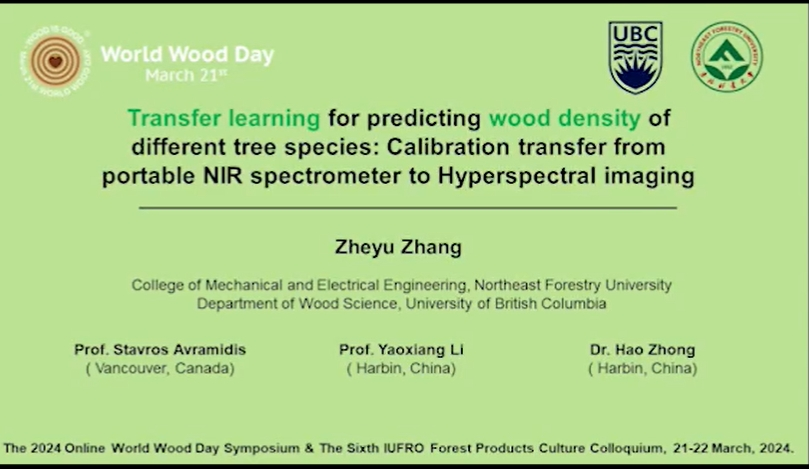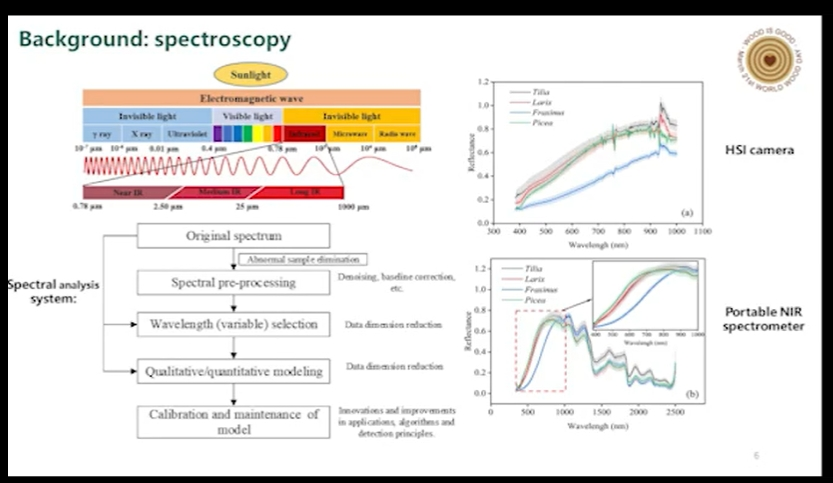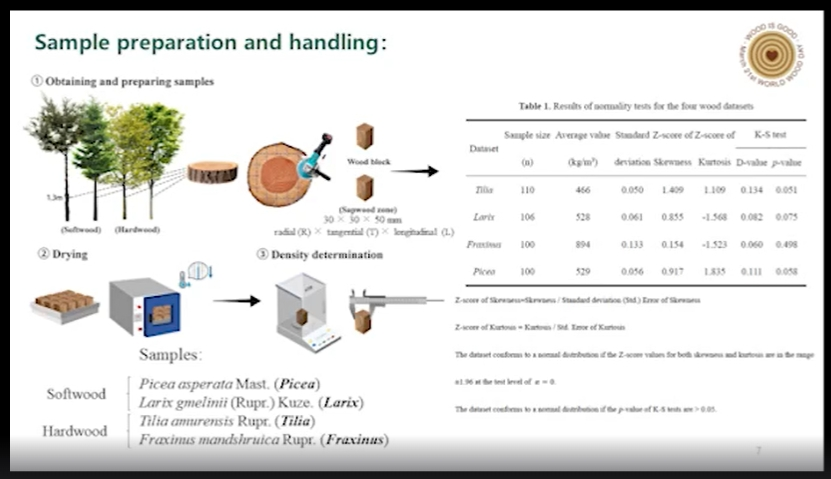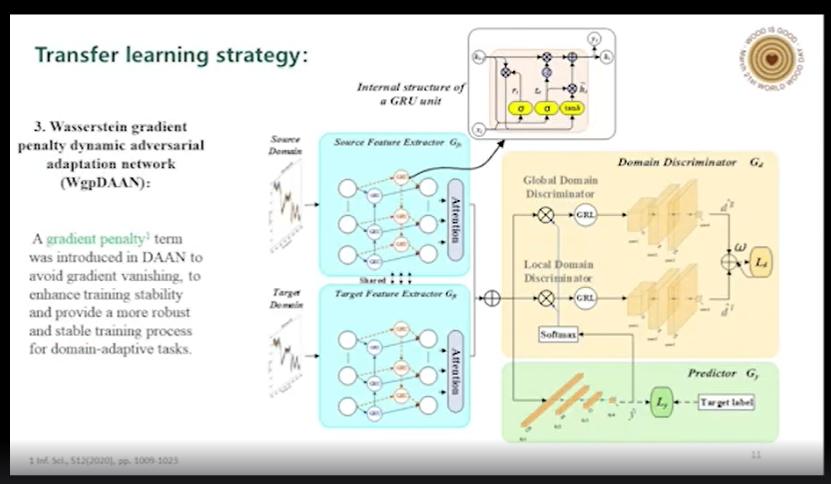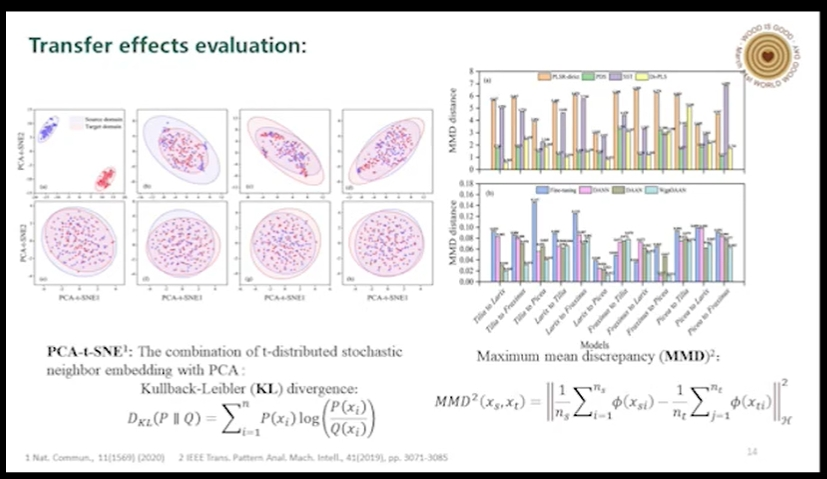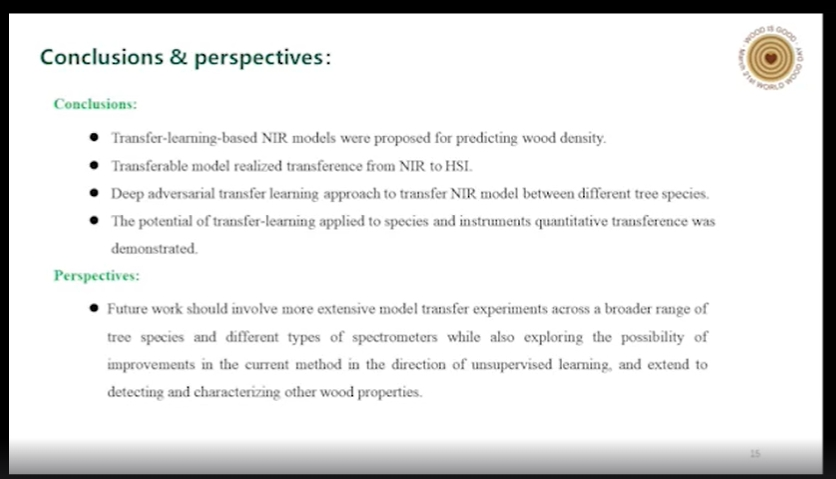会议名称:“2024世界木材日”研讨会暨第六届国际林联(IUFRO)林产品文化研究组讨论会
会议时间:2024年3月21-22日
报告嘉宾: Zheyu Zhang
嘉宾单位:东北林业大学机电工程学院/不列颠哥伦比亚大学木材科学系
报告题目:Transfer Learning for Predicting Wood Density of Different Tree Species: Calibration Transfer from Portable NIR Spectrometer to Hyperspectral Imaging
报告摘要:
Wood density is a crucial property indicator for construction material selection, quality assessment, and modification. Spectral analysis techniques and chemometric models offer potential solutions for the rapid and non-destructive assessment (NDA) of wood density. However, probe-contact spectroscopy has low efficiency in spectrum collection, and spectral models are highly specific to variations in instruments and samples. Traditional calibration transfer (CT) methods are diverse and struggle to adapt to domains with significant distributional differences. By simulating operations under natural light, this work aimed at exploring a deep transfer-learning (DTL) strategy, facilitating the transfer of wood density prediction models between different instruments (from portable near-infrared (NIR) spectrometers to hyperspectral-imaging (HSI) imagers) and among tree species (two softwood and two hardwood species). A bidirectional gated recurrent unit plus attention layer (BiGRUattention) was employed as the basic topology for the deep network. The results indicated that the generalization ability and robustness of HSI model transferred by deep adversarial transfer-learning (DATL) strategy, including domain-adversarial-neural Network (DANN) and dynamic-adversarial- adaptation network (DAAN), surpassed traditional CT and DTL methods, achieving a level comparable to NIR-calibrated models. DAAN based on Wasserstein distance with gradient penalty (WgpDAAN) optimized model accuracy, convergence speed, and stability. The DATL model could be adapted to wood spectral data from different instruments and tree species, where WgpDAAN significantly reduced modeling costs and enhanced productivity, and could be extended to detecting and characterizing other wood properties.
责任编辑:iwcs25H


 1,130
1,130
